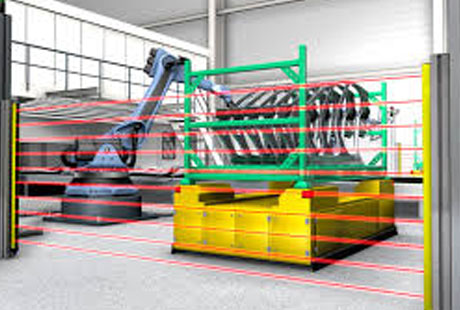How To Install A Light Curtain?
Key Takeaway
To install a safety light curtain, start by positioning the connector correctly with the long side facing the light curtain. Begin with the receiver side of the setup. Insert your first cable, ensuring that the connector aligns properly, typically with the longer side in a specific orientation to fit securely.
This initial setup is crucial for establishing a reliable connection and ensuring that the safety light curtain functions as intended. Proper alignment and secure cable connections are essential for the system’s effectiveness in detecting obstructions and triggering safety protocols. Always refer to the manufacturer’s installation guide for detailed instructions tailored to your specific model to ensure optimal safety and functionality.

Pre-Installation Planning
Before installing a safety light curtain, it’s crucial to thoroughly plan the setup. This includes evaluating the area where the light curtain will be installed to ensure it fully covers the hazardous zone without any gaps. Determine the type and size of the light curtain needed based on the minimum required safety distance and the type of machinery it will protect. Also, consider the accessibility for maintenance and the environmental conditions like light interference, which might affect the sensor’s functionality.

Safety Considerations Before Installation
Prior to installation, a comprehensive safety review should be conducted. This involves securing the area where the light curtain will be installed, ensuring that all machinery is powered down to prevent accidental activation. Strict adherence to the manufacturer’s safety guidelines is crucial, particularly concerning the safe distance and alignment of the sensors. This phase should also include assembling all necessary safety equipment and confirming that only qualified personnel will perform the installation to uphold high safety standards and compliance.
Step-by-Step Installation Procedure
The actual installation of a light curtain should be executed with precision to guarantee flawless operation. Begin by securely mounting the transmitter and receiver units directly opposite each other, ensuring they are perfectly aligned horizontally and vertically to cover the required area. Connections should be made to both the power supply and the machinery’s control system. Initial testing is critical—activate the system to verify that the light curtain correctly detects obstructions and communicates effectively with the machine controls to initiate stop commands.
Common Installation Mistakes to Avoid
Installation errors can compromise the effectiveness of safety light curtains. Common pitfalls include misalignment of the transmitter and receiver, which can create non-detection zones, and incorrect distance settings, which may not provide sufficient stopping time for the machinery. It is also vital to ensure that the curtain is not installed too close to reflective surfaces, which can cause false detections. Regular updates of the system’s firmware and adherence to the specific wiring guidelines are essential to avoid functional discrepancies.
Troubleshooting Installation Issues
Should the light curtain fail to operate as expected, begin troubleshooting by revisiting the alignment and connection setups. Check for any loose wires or misaligned components. Review the manufacturer’s troubleshooting guide for specific diagnostic procedures, which can help identify issues like sensor dirt or obstructions, electrical noise, or software problems. Sometimes, adjusting the sensitivity settings of the light curtain or shielding it from external light sources may resolve detection issues.
Conclusion
Effective installation of safety light curtains is pivotal for safeguarding workers and maintaining operational efficiency in industrial settings. Following best practices such as thorough planning, rigorous safety adherence, precise installation, and proactive troubleshooting can substantially mitigate workplace hazards. A well-installed light curtain not only complies with safety regulations but also enhances the overall safety culture within industrial environments, ensuring both equipment safety and personnel protection.
